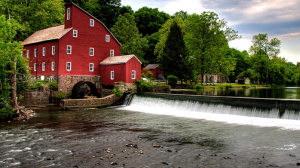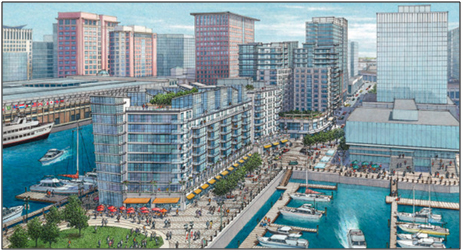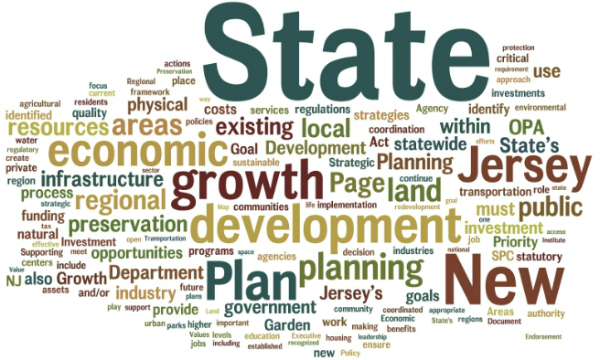New Jersey Future Blog
Placing Economic Value on Natural Systems
June 25th, 2014 by New Jersey Future staff
New Jersey Future summer intern Kevin Burkman is the author of this article.

Photo courtesy of Blue Raritan
The sixth annual Sustainable Raritan River Conference, “Valuing Natural Capital and Ecosystems Services,” focused on ecosystem valuation. Placing economic value on ecosystems is a concept that attempts to recognize the financial importance of natural systems such as forests, waterways, air and open space. These natural attributes provide important ecological services, including water and air purification, nutrient and sediment controls, pollination, and flood protection. Retaining or rehabilitating these “services” is key to reducing the substantial costs of mitigating the sometimes deleterious effects both nature and humans can have on the landscape. These ecosystem services may also generate new direct revenues.
Over a dozen speakers at the conference, including academics, professionals, conservationists and municipal leaders, discussed the importance of quantifying the values of natural systems and integrating them into the economy, planning, and human and environmental health.
Patricia Elkis, deputy director of the Delaware Valley Regional Planning Commission (DVRPC), focused on a particular type of natural capital: open space. Her presentation, “Return on the Environment and Quantifying Economic Value of Protected Open Space in Southeastern Pennsylvania,” looked at that region as a case study and highlighted the economic and health importance of open space and trail systems.
Property values are maintained and even improved when they are in close proximity to open space, Elkis said, citing research that indicates a property situated a half-mile from open space in southeastern Pennsylvania increases in value by an average of $5,000, and a property that is directly adjacent to open space can experience as much as $10,000 in increased property value. By increasing property values, open space also increases property tax revenue for county and municipal governments and school districts; Elkins said their research estimated that open space accounts for $240 million in property and transfer taxes for the region.
Trails were mentioned by Elkis as an important form of open space that has the potential to improve property values, create revenue and improve health. In more urban and suburban communities, trails improve connectivity, providing better access to schools and shopping, and can reduce auto usage. Elkis cited Delaware County’s Radnor Trail as an example: Used by 150,000 people annually, the trail increases the property value of nearby homes by an average of nearly $70,000, and is promoted by local real estate agents when listing homes for sale, making the trail a marketable amenity. Montgomery County’s Perkiomen Trail was also mentioned. At 18 miles long and linking 10 communities, the trail attracts 400,000 users annually, who generate local economic activity when they patronize bike shops, refreshment stands and restaurants along the trail. The trail also connects three county parks and two historic sites.
Elkis also made the connection between open space and lower health costs, since it provides a venue for many types of free and low-cost recreational activity that contributes to an individual’s physical fitness and improved health.
As the discussion continues in New Jersey about how best to fund open-space preservation, Elkis’s case study provides a good reminder of the benefits open space brings.
















